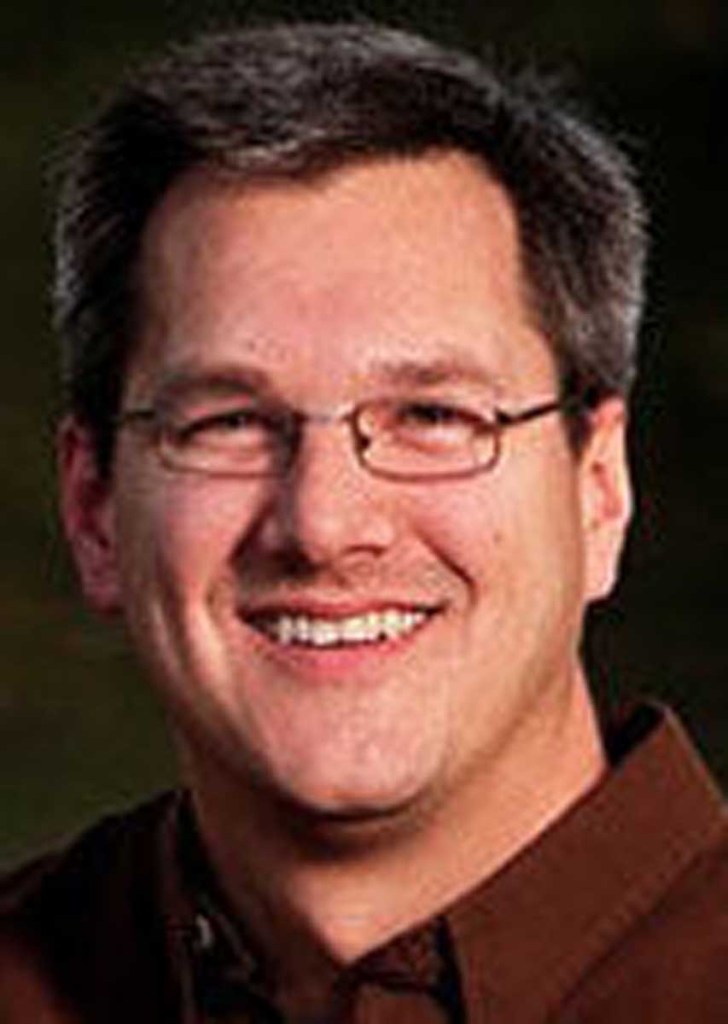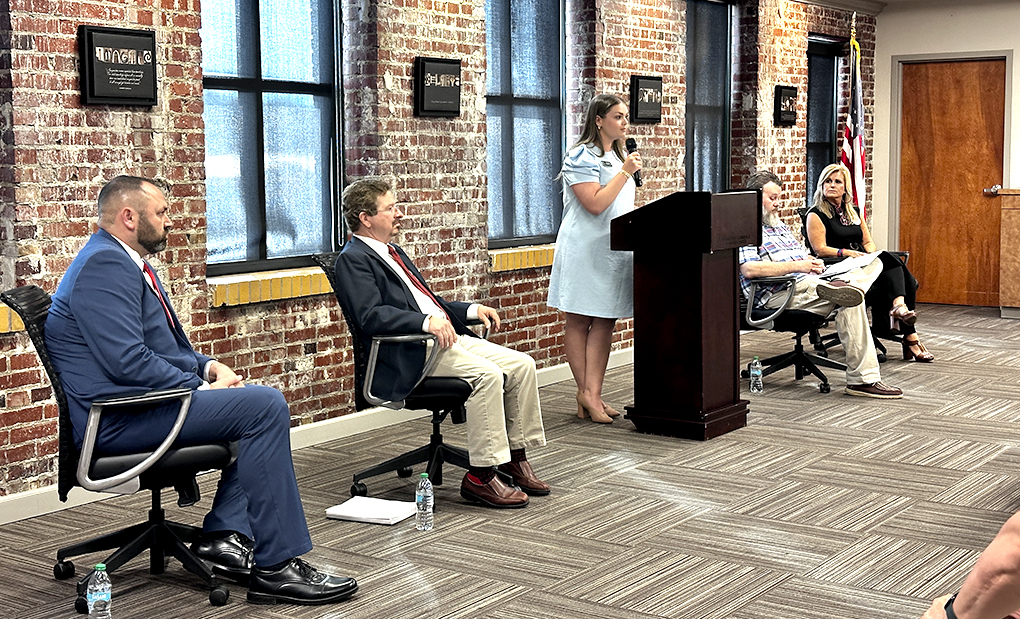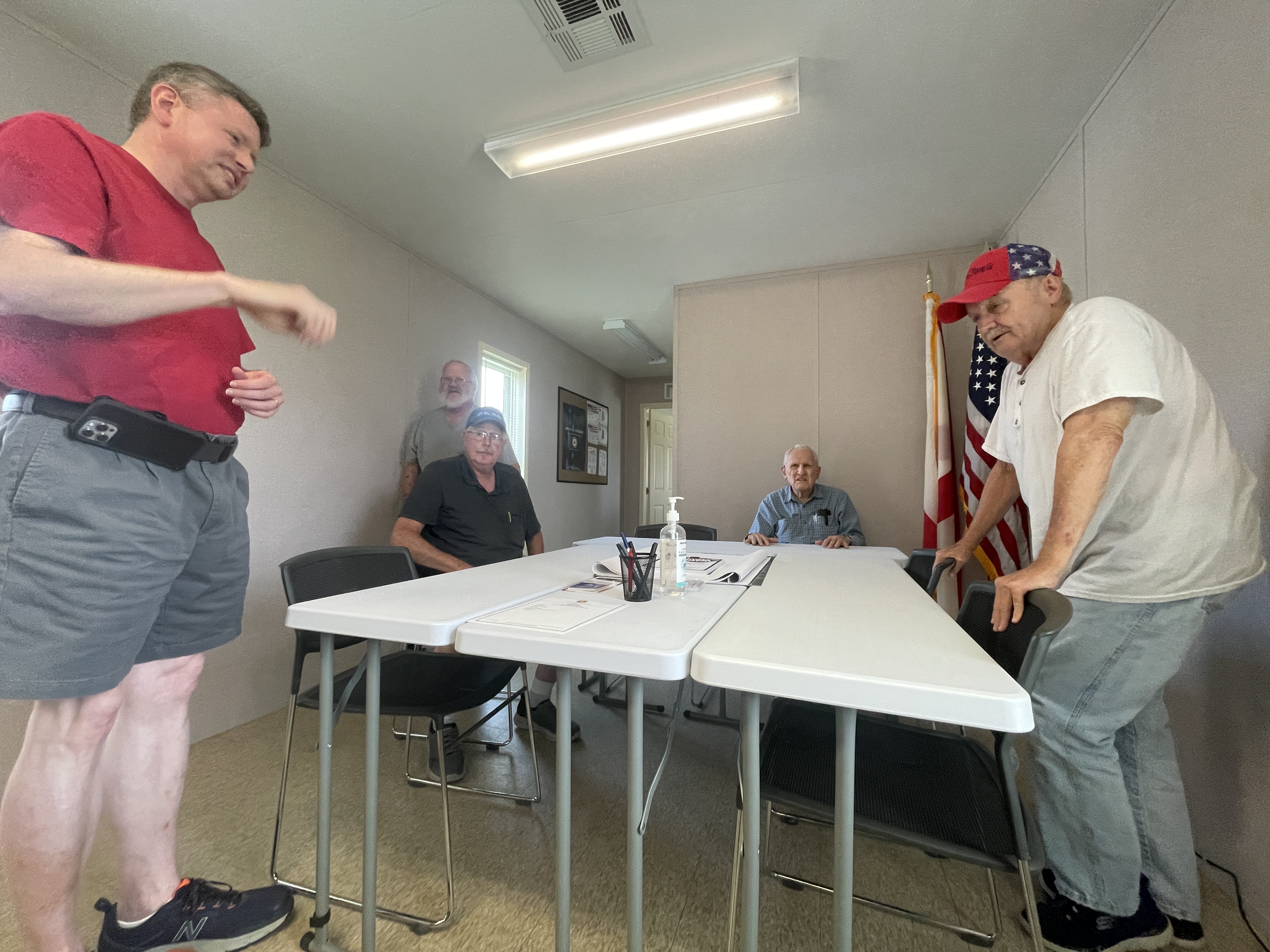Who’s at fault? Predicting the next big quake is easier said than done
Published 6:00 am Sunday, October 11, 2015

- Todd Halihan
EDITOR’S NOTE: This is the last installment of a multi-part series on earthquakes prepared by the Enid News & Eagle.
Forecasting seismicity is risky business.
Todd Halihan, a professor at the Oklahoma State University Boone Pickens School of Geology, said publicizing incorrect earthquake predictions can be troublesome when he spoke recently in Enid about earthquakes.
When an audience member asked if and when a big earthquake will hit Oklahoma, Halihan told him the story of L’Aquila.
More stories this week
• Schools prepare for tornadoes … what about quake drills?
• Oklahoma quakes vs. tornadoes: Comparing the damage factor
L’Aquila is an old city of almost 80,000 people in the heart of Italy that has experienced and recorded earthquakes since the 1300s.
Over the years, as seismic swarms of low-magnitude earthquakes would shake the city, the population learned to move outside to wait until long after the rattling stopped to determine if it was safe to be inside buildings, Halihan said.
In March 2009, one such swarm kept the city on its toes, so officials and scientists met to determine if there was chance of a larger quake and ruled there was no danger, according to an Oct. 22, 2012, article in Nature, an international weekly journal of science.
A week after the meeting and announcement that all was safe, a 6.3 magnitude earthquake rocked central Italy on April 6, killing 309 people and collapsing more than 20,000 buildings.
In 2012, six scientists and one government official were found guilty of manslaughter and sentenced to six years in prison, based on how they assessed and communicated the risk before the earthquake hit, according to the article. An appeals court later overturned the scientists’ prison sentences and reduced the government official’s sentence.
“You can get in a lot of trouble,” Halihan said of earthquake predictions. “It’s a concern for us. We don’t have great data yet.”
As Oklahoma is moving and shaking, residents want to know what will happen next. But predicting the next big quake is easier said than done and comes with its own set of hazards.
‘I thought we were both dead’
Earthquakes generally follow a pattern: The more smaller magnitude earthquakes there are, the more likely is a larger magnitude quake to occur, said Bill Ellsworth, a geologist with the U.S. Geological Survey.
“The primary concern is events similar to the Prague quake in 2011,” Ellsworth said. “The damage could have been much more severe if it happened in a more populated area.”
On Nov. 5, 2011, a 5.6 earthquake struck near Prague, Okla., breaking windows, damaging brick and masonry structures, and injuring Sandra Ladra.
Ladra said she was sitting in a recliner when the quake struck and shook her stone fireplace apart.
“Our ceiling is 28 feet high and we had a double fireplace,” she said. “When the house started violently shaking, it was like someone was up there throwing the stones off as fast as they could. When they hit the carpet, they would bounce.”
A stone larger than a human head landed in her lap, she said, and it narrowly missed her son’s head as he tried to help her out of the chair.
“I thought we were both dead,” she said.
Four years later, she still is suffering complications from the injury.
“I’ve been through one surgery and a lot of pain, and I’ll have to have one knee replaced,” she said.
Ladra filed suit in August 2014 against two oil companies, Spess Oil Co. and New Dominion LLC, alleged to have caused earthquakes, including the Prague quake that caused her injury.
The case went before the Oklahoma Supreme Court, which ruled that plaintiffs can seek damages against oil companies in jurisdictional courts, and the case now is back before the district court, said Nate Steel, of Steel, Wright and Collier, the Arkansas law firm representing Ladra in her case.
Oklahoma hasn’t seen a quake that strong since Prague, Ellsworth said.
“We are fortunate we haven’t seen a 5.0 since 2011,” he said.
‘We all know now there is a direct correlation’
In March, the USGS released a statement that “reactivated faults that have produced thousands of Oklahoma earthquakes are capable of causing larger seismic events in the future.”
Increased seismic monitoring could help predict a larger quake, USGS geophysicist George Choy said.
“To identify factors, we need research and data into the factors that have been inducing earthquakes,” Choy said. “These include, but are not limited to, evaluating the significance of injection volume, injection pressure, geologic properties of rocks and geophysical surveys to delineate the structure of the earth, such as faults.
“Increasing seismic monitoring can enable detecting activity that might be related to induced earthquakes, which can be used to issue a warning to proceed cautiously or even stop injection activity. Some factors, such as injection volume and pressure, can be controlled by well operators.”
In April, the Oklahoma Geological Survey said it was “very likely” the majority of Oklahoma’s seismic activity was triggered by injection wells associated with oil and gas production; on Aug. 4, Gov. Mary Fallin echoed the statement.
“We all know now there is a direct correlation between the increase in earthquakes we’ve seen in Oklahoma and the disposal wells, based upon many factors, whether it is volume or location or whether it is on a fault line, how deep that disposal goes into the earth itself,” Fallin said. “Oklahoma recognizes there is an earthquake problem in our state. We’re trying actively to deal with it, come up with solutions and make sure they are based on scientific fact.”
Energy and Environment Secretary Michael Teague said that although there is a correlation, the solution isn’t clear.
“We’ve made this connection to injection wells, but there’s still aspects we don’t know,” he said. “It’s not fracking. We’ve narrowed it down to the disposal wells, which is still a pretty broad stretch. Is it the depth of the wells? The volume of the wells?”
‘We may have reached that limit’
The Oklahoma Corporation Commission, which regulates oil and gas production, including wastewater injection wells, is working to determine a course of action.
“Oklahoma was considered ideal for disposal wells because we have this huge formation, the Arbuckle, to distribute the water throughout,” OCC spokesman Matt Skinner said. “Now, of course, the Arbuckle is the No.1 concern we have when it comes to seismicity.
“There’s no doubt disposal well operations are changing and will change more as we deal with seismicity. The earthquake issue is a key concern and will drive much of what we do.”
The OCC already has taken some measures to reduce seismicity and regulate injection activity, including implementing a traffic light system for determining when a well should reduce rate or volume of injection, proceed with caution or stop injecting altogether.
The OCC also has shut down or reduced injection volumes for wells near earthquake epicenters, such as in Crescent, where six earthquakes in July damaged the high school, or near Cushing in September.
The measures seem to be helping, Halihan said.
“I think we are seeing some response to some actions that are being taken,” he said. “It looks like we are starting to head down a road of decreasing earthquakes, but we don’t have great data yet.”
Seismologists must look statistically at actions and results, which takes time, Halihan said.
It’s impossible to predict the future of oil and gas operations and seismicity, Skinner said, but a moratorium on production is off the table.
“As far as the commission is concerned, the moratorium question was researched back in June (2014) at the request of a commissioner and our legal staff says that we don’t have the legal authority — like, say, Arkansas — to institute an across-the-board moratorium. We just don’t have the legal power.”
In 2011, the Arkansas Oil and Gas Commission voted to ban new disposal wells in a 1,150-square-mile area, and to close an injection well after hundreds of earthquakes shook the region, according to a July 27, 2011, Associated Press article.
Jeremy Boak, the new director of the Oklahoma Geological Survey, said the future of injection wells is unsure.
“We are working with the Corporation Commission to help them the best we can,” he said. “If we can identify some are where limiting it would have the most effect, that would be great. If the earthquakes continue, we will have to consider reducing volume or looking for other places for disposal.”
The Arbuckle formation has a limit to how much water it can hold, Teague said.
“We may have reached that limit,” he said. “We need to map the Arbuckle, make a database to figure out how much water we are disposing and we just don’t know the answers yet. We need a database of all this water we’re disposing and how much is going into each well.”





